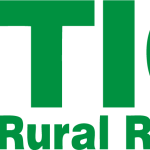
Soil health will be a fundamental component of sustaining family farms and rural communities in the long-term. A healthy functioning soil provides numerous local ecosystem benefits in your own community including improved water quality, flood and drought mitigation, and other benefits that can improve both human health and wealth.
USDA-NRCS defines soil health as the continued capacity of a soil to function as a vital, living ecosystem that sustains, plants, animals, and humans. The four principles of soil health management include minimize disturbance, maximize soil cover, maximize biodiversity, and maximize presences of living roots. I encourage you to check out their resources on soil health at nrcs.usda.gov. No-till, cover crops, diverse crop rotation, livestock integration, mulching/amendments, nutrient and pest managements are some of the main practices that keep the physical, biological, and chemical aspects of the soil healthy. As an example, I like to reference two long-term (14 & 15 years) crop rotations studies (Monmouth, Illinois and Ridgetown, Ontario) that have shown including winter wheat in the rotation with corn and soybeans increases water stable aggregates, which is a very sensitive and good indicator for soil physical health. Researchers also found other benefits including increased total soil nitrogen, higher potentially mineralizable N, higher nitrogen use efficiency, reduce N rates needed in corn for maximum economic return, and higher yields in corn and soybean.
One of my South Dakota colleagues, Dwayne Beck, has long talked about rotational intensity and crop diversity. I encourage you to read some of Dwayne’s thoughts and look into his work by visiting the website at dakotalakes.com. Dwayne was also our guest speaker the 2020 Southeast Nebraska Soil Health Conference in Hickman and you can watch both of his presentation at croptechcafe.org/southeastnesoilhealth/. Crop rotation diversity includes four key components: Years separating the same type of crop, presence of both grass and broadleaf crops, presences of both spring and fall sown crops, and presence of warm season crops. In the corn-soybean rotation, two warm season crops are grown including one grass and one broadleaf with one year between the same crop type. There is definitely an opportunity to include winter wheat, alfalfa, and annual forages to increase crop diversity and soil health.
The University of Nebraska-Lincoln, the Natural Resources Conservation Service, and Nebraska farmers and ranchers are participating in a statewide effort to enhance the adoption of soil health and rangeland health management systems through the Soil Health Demonstration Farms and Ranch Initiatives (cropwatch.unl.edu/soilhealth). These initiatives have established in-field management comparisons across the state to showcase grazing management and cropping system comparisons, including more diverse crop rotations.
Sustainability of the family farm includes balancing short-term profitability and soil health practices. Now and likely more so in the future, consumers, companies, and the entire supply chain are increasing interested and motivated to document sustainability down to the farm level. Farmers utilizing the full suite of soil health practices could benefit financially through some of these future sustainability efforts from farm to folk. Know your crop, know your tech, know your bottom line.


